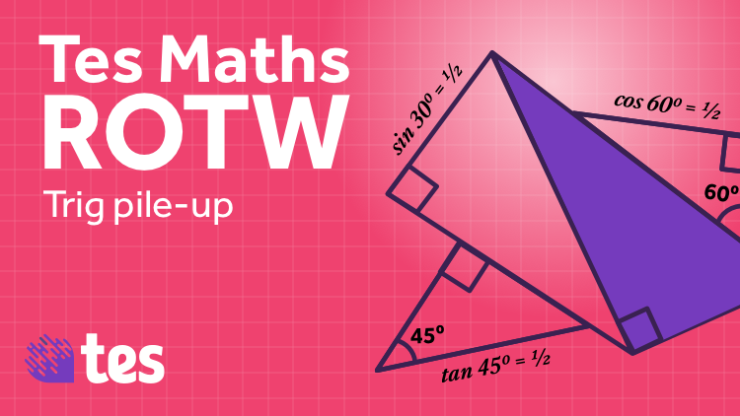To see all of the work I do for TES Maths, including Resource of the Week, Inspect the Spec, Pedagogy Place, Maths Newsletters and Topic Collections, please visit the TES Maths Blog here
What is it?
Here is a frustrating issue that I have encountered many times of my teaching career: my students are perfectly happy using Pythagoras’ Theorem to calculate the length of missing sides in right-angled triangle. Likewise, they are pretty good at using SOH CAH TOA to working out missing sides and angles. However, the problem occurs whenever students are presented with a right-angled triangle in isolation. Then questions such as “is this a Pythagoras one or a SOH CAH TOA one, sir?” start to fill my ears.
It is one thing students being able to do a skill. It is an another matter entirely ensuring they can correctly choose when to use that skill.
That is where this trigonometry pile-up activity comes into play. Students are presented with a whole host of right-angled triangles, stacked precariously on top of one another, and challenged o work out the missing information as they climb their way to the top. Both Pythagoras and SOH CAH TOA are needed, and it is up to the students to decide when each is required.
How can it be used?
There have been a few trigonometry pile-up activities doing the rounds in the maths resources world over the years, but this is one of my favourites. I like the way the questions have been designed so that all the answers are integers. This takes the rounding element out of the equation, making it easier for both students and the teacher to check if they are right. It also opens up the opportunity to do this as a non-calculator activity, which could provide key practice of using exact trigonometric values for Paper 1 of th GCSE. I also love the fact that the answers are provided!
Students can work their way through the activity, perhaps trying it on their own first, and then checking their answers with their neighbour. And when students finish, there are two nice extension opportunities. The first is to challenge them to find the values of all other missing lengths and angles, thus ensuring they can deal with non-integer values. And the second is to challenge them to create their own version of the trig pile-up to give to a friend, with all answers and working out included. This will ensure that their trigonometry and Pythagoras skills are up to scratch, and crucially they known when and how to use each one.
Thanks so much for sharing
Craig Barton
Download: Right-angle trig pile-up
View the author’s other resources
